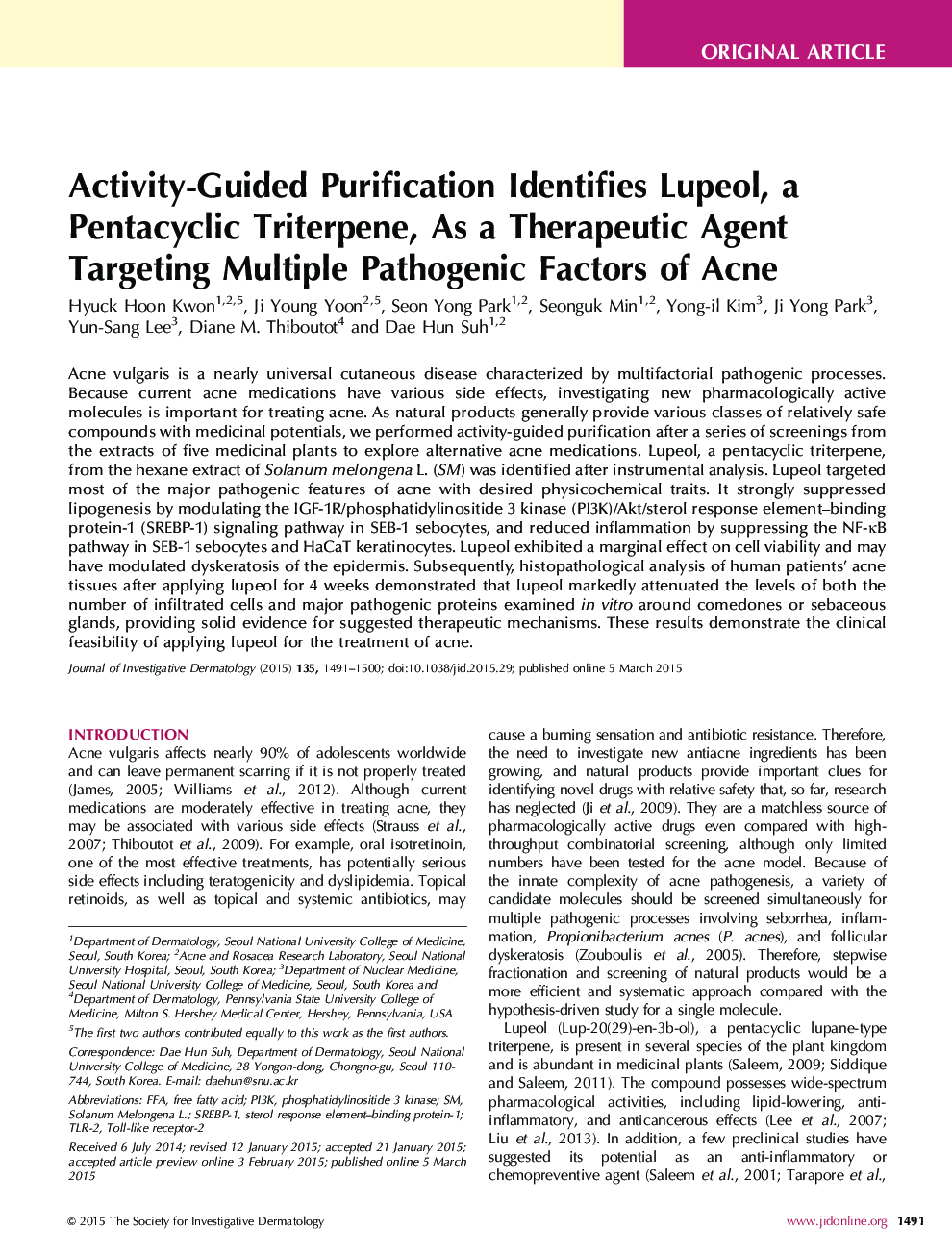| Article ID | Journal | Published Year | Pages | File Type |
|---|---|---|---|---|
| 6075515 | Journal of Investigative Dermatology | 2015 | 10 Pages |
Acne vulgaris is a nearly universal cutaneous disease characterized by multifactorial pathogenic processes. Because current acne medications have various side effects, investigating new pharmacologically active molecules is important for treating acne. As natural products generally provide various classes of relatively safe compounds with medicinal potentials, we performed activity-guided purification after a series of screenings from the extracts of five medicinal plants to explore alternative acne medications. Lupeol, a pentacyclic triterpene, from the hexane extract of Solanum melongena L. (SM) was identified after instrumental analysis. Lupeol targeted most of the major pathogenic features of acne with desired physicochemical traits. It strongly suppressed lipogenesis by modulating the IGF-1R/phosphatidylinositide 3 kinase (PI3K)/Akt/sterol response element-binding protein-1 (SREBP-1) signaling pathway in SEB-1 sebocytes, and reduced inflammation by suppressing the NF-κB pathway in SEB-1 sebocytes and HaCaT keratinocytes. Lupeol exhibited a marginal effect on cell viability and may have modulated dyskeratosis of the epidermis. Subsequently, histopathological analysis of human patients' acne tissues after applying lupeol for 4 weeks demonstrated that lupeol markedly attenuated the levels of both the number of infiltrated cells and major pathogenic proteins examined in vitro around comedones or sebaceous glands, providing solid evidence for suggested therapeutic mechanisms. These results demonstrate the clinical feasibility of applying lupeol for the treatment of acne.
